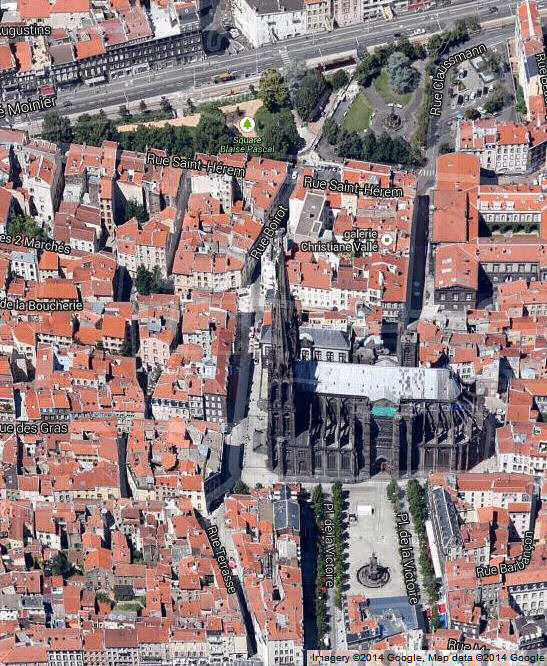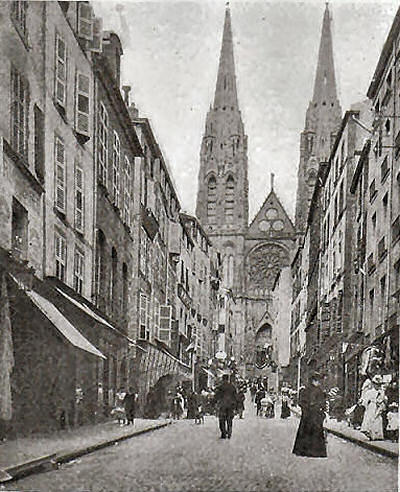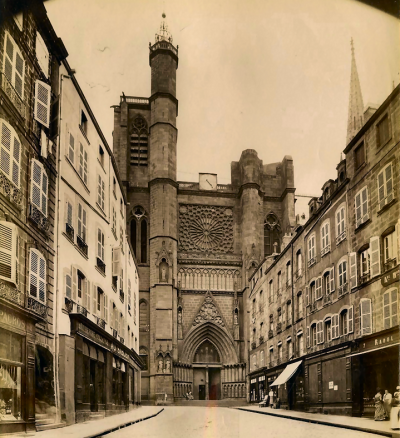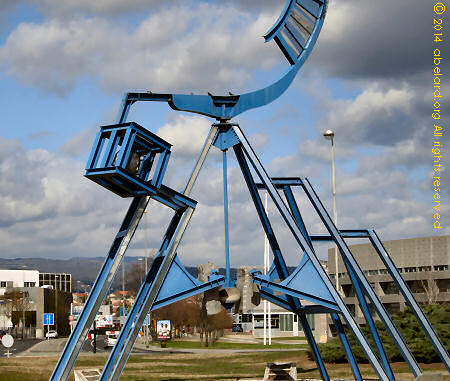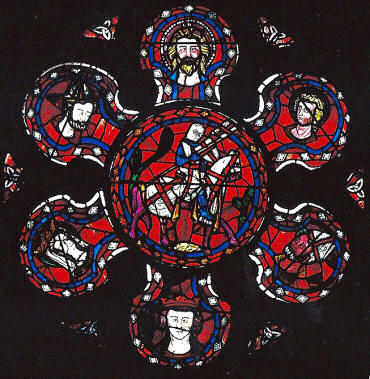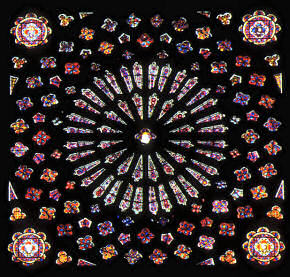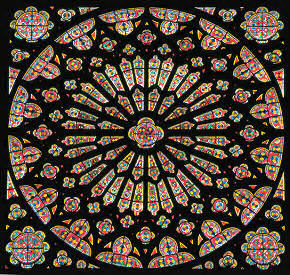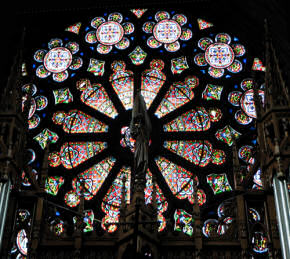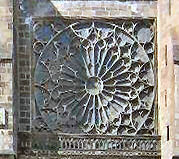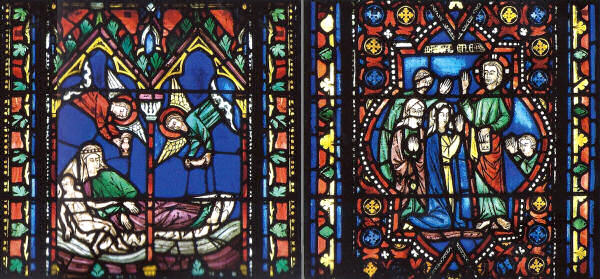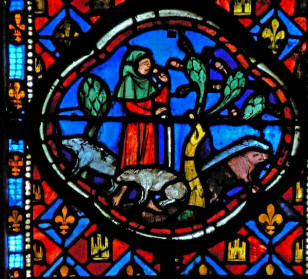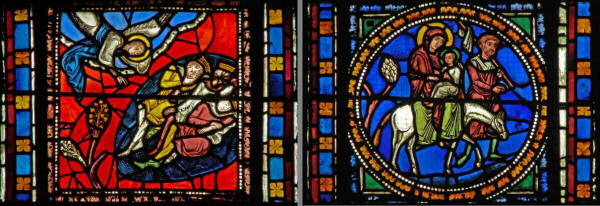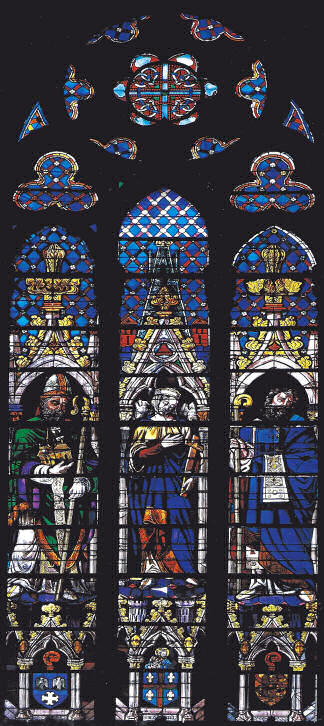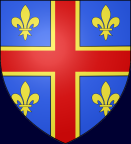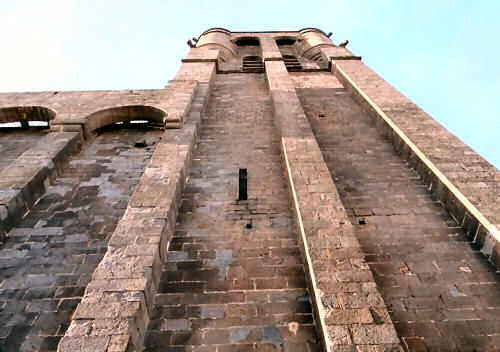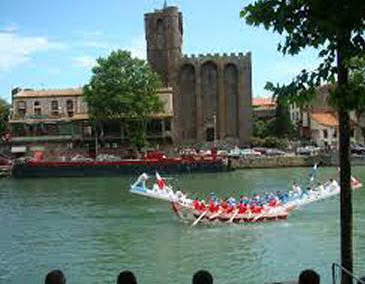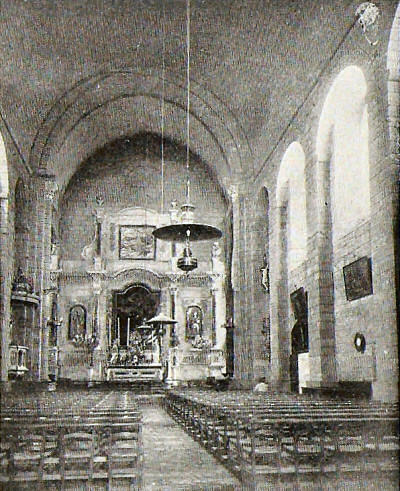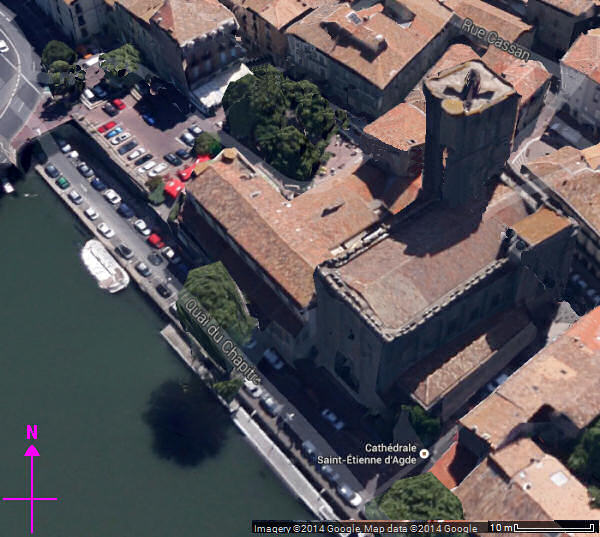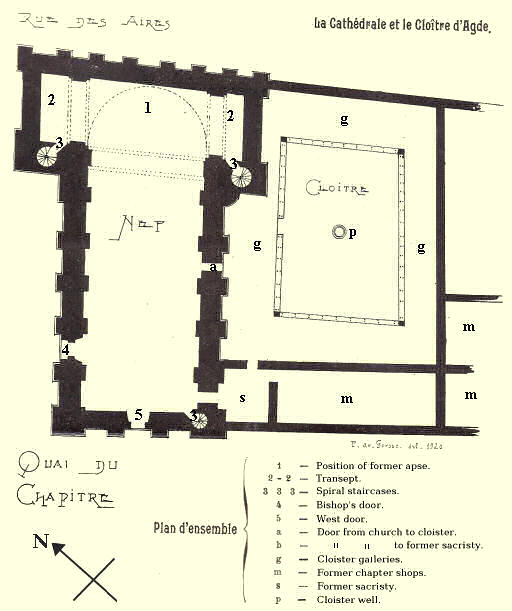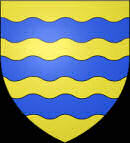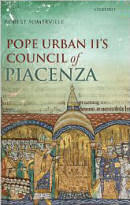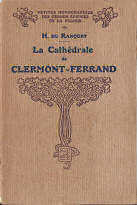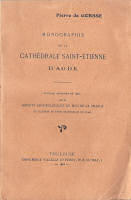 |
 |
 |
 |
 |
|||
 |
 |
 |
cathedrals 13: |
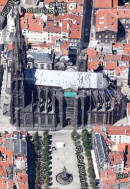 |
|||
|
|
|||
|
index Clermont-Ferrand is at the heart of France's volcanic region. Thus, its cathedral, dedicated to Our Lady of the Assumption - Notre Dame de l'Assomption, is built of volcanic rock. This makes it appear very dark.
The road up to the cathedral, to the west door, is quite steep.
On the north facade, I see they have modernised the former, silly town clock, as seen in this early photo:
Clermont-Ferrand is also a film centre, holding an annual short film festival. On a summer's evening, in the square to the south of the cathedral (shown clearly in the Google map rendition above) you may find a large screen erected and a cinematically landmark film being shown - say, Battleship Potemkin.
There's also an Irish pub less than 10 minutes walk to the south of the cathedral. Clermont-Ferrand has strong links to Vichy, where the occupying Nazi Germans installed their puppet 'Vichy government' after they invaded France in 1940. Close by to Clermont-Ferrand is the volcano theme park, Vulcania. (If you decide to visit, don't believe the road directions advised by the Clermont council!) some cathedral historyThere has been a religious site in this locality since at least Roman times. The current cathedral was started in 1248 and was consecrated in 1359. However, the west facade was never completed. The Council of Clermont was held from the 18th to the 28th November, 1095. During the Council, Pope Urban II gave a speech on 27th November somewhere in the Clermont region (the work on the cathedral began 150 years later). Pope Urban II called for, and started, the First Crusade to the Holy Land. On the south side of the cathedral is a square, and in that square is a mediocre statue to Pope Urban II [sometimes Urbain]. There are five different versions of his alleged speech, all written after the event, complete with political spin. Consequently, nobody really knows what he said - just the sort of thing that occupies and amuses historians, and probably will for ever more. The patron saint of the Crusades is Saint George de Cappodocia, who is also much celebrated by countries such as England and Spain that participated in these campaigns against Muslim incursions. There are 23 parishes in the Auvergne region with churches dedicated to Saint George. In 1794, the Revolutionaries wanted to demolish the building willy-nilly, a destruction prevented by the town architect and a defrocked Benedictine monk Verdier Latour. The architect pointed out that the resulting rubble would cause major problems in the town, while the monk suggested using the cathedral as a meeting hall and a theatre. But three towers were demolished, causing much collateral damage as stones were thrown down, before the vandalism was halted. Altars and statues were also broken. The cathedral's final phase of construction was in the 19th century, started after Napoleon III visited. He decided to provide not just the financing for repairing the Revolutionary vandalism, but also enough to complete the west facade of the cathedral, including the two towers atopped by spires. And Napoleon III instructed his favoured architectural restorer, Eugène Viollet Le-Duc, to manage the works. Viollet-Le-Duc created two bays to the north and one to the south, the narthex, the west towers and the entire west facade. As so often with Viollet-Le-Duc, he was rather carried away by his imagination, adding to a purely 14th-century nave the very 13th-century narthex and west facade. The works were finally finished in 1902, complete with heavy, ugly, ungenerous steps to the west door, the result of the town council refusing to provide enough land for an entrance area to match Viollet-Le-Duc's rather grandiose facade. |
|
||||||||||
There is a useful, but expensive, book for the seriously dedicated, Pope Urban II's council of Piacenza by Robert Somerville, 2011. Being in the Puy de Dome, the Cathédrale Notre-Dame de l'Assomption de Clermont-Ferrand is built from very dark, volcanic stone, the old town surrounding the cathedral being known as the ville noire (black town). Another cathedral built with volcanic stone is the cathedral at Agde, close to the Mediterranean where France meets Spain. A cathedral that looms black and almost forbidding. This rather simple fortified church is even more impressive when the sky is dark and the rain pours down. Some refer to the colour as brown, but I am sticking with black. Clermont-Ferrand cathedral is sometimes referred to as the black cathedral, but to me it looks quite cheerful when compared to Agde. the rose windows and other stained glassSome of the best 13th-century glass in France is at Clermont-Ferrand. In among the early glass are also some highly imaginative windows, completed in 1981.
Like at Chartres, Le Mans and Bourges cathedrals, the stained glass at at Clermont-Ferrand was probably saved from damage or destruction by their distance from Paris during the French Revolution and from the World Wars. As well as the three great rose windows, there are many story windows, made up of about 400 medallions. Here are a few samples:
With 400-odd medallions, it pays to concentrate a bit, or you're liable to become overwhelmed. This is an art gallery to which you can return, and return, and return. Remember your binoculars! I particularly like the glass in the north apse chapels, those of Saint Austremoine and Saint George. And on the southern side of the apse there is a 'very special treat' in the middle lancets of Saint Anne's Chapel, where most of the panels are 12th century (the bottom eight medallions of the two lancets). The quality of the glass restorations in this cathedral, done by Gauldin Clermont in 1930, are unusually fine.
There are thirty-four 15th-century lancets, like those illustrated just above, in the clerestory. I usually call these prophet and king windows, though they often include bishops and saints as well. Plan of Clermont-Ferrand cathedral |
||||||||||||
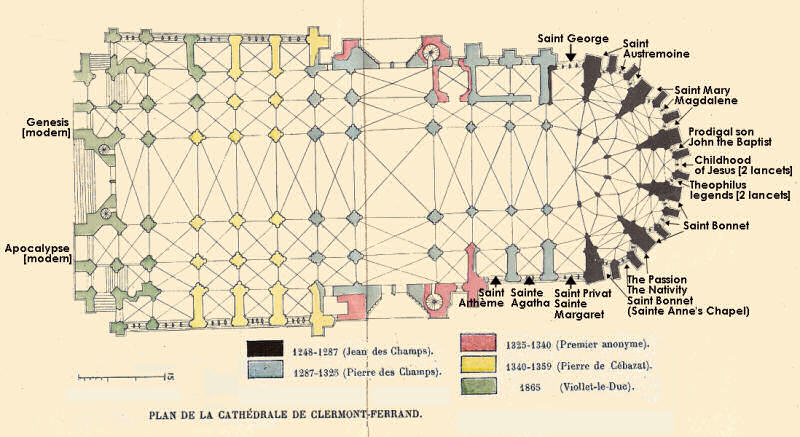 |
||||||||||||
agde cathedral of saint étienneAgde is distinguished by the dark grey, almost black volcanic rock used in many of its buildings. This rock comes from Mont Saint-Loup, a nearby extinct volcano. The Cathédrale Saint-Étienne d'Agde is a 12th-century fortified church, complete with machicolations, built on the site of a Phoenician temple. The first cathedral, hardly completed, in the 8th century was rased to the ground by Charles Martel. He did this, as in other towns such as Beziers and Nimes, to prevent the Saracens, whom he had newly ousted, from using the building as "a den". His son, Pepin le Bref, finally conquered the region in the 750s. The next, Romanesque, cathedral, finished in about 1220, was built by the bishop of Agde who was also its count, its temporal lord. This was common in towns of the Midi at that time. The cathedral's fortified nature was preparation against invasion from the nearby Mediterranean Sea. The Wars of Religion in the 16th century were a source of damage as the Calvinists burnt sacred relics, and similar profanities occurred during the French Revolution. Then the cathedral became a 'stable' for pigs, while the last bishop of Agde died on the scaffold in Paris, refusing to take the Republican oath and "dishonour his old age".
It is said that in 1857, a "stupid entrepreneur" brutally destroyed the Roman cloisters. A priest rescued arches, columns and capitals of the cloister from the rubble, and included them in the walls of a side chapel built where the cloister had stood.
bibliography
end notes
|
||||||||||||
| abstracts | briefings | information | headlines | loud music & hearing damage | children & television violence | what is memory, and intelligence? | about abelard | ||
© abelard, 2014, 28 march the address for this document is https://www.abelard.org/france/cathedrals13_clermont_ferrand_agde.php |





